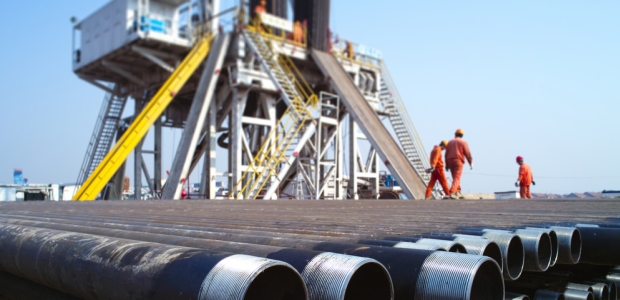
Below the Hook Safety – Oil & Gas Drilling and Well Servicing
Many less serious incidents, as well as some serious incidents, would have been prevented had a fail-safe braking system been installed.
- By Dave Terry
- Jan 01, 2015
Increasing pressure is being placed on well servicing companies to address and eliminate the possibility of "crown out" issues, while little focus is placed on the elimination of mechanical braking systems. Currently, companies are training and reinforcing crews on best practices, procedures, and mental vigilance to recognize and reduce risk, but an essential "safety device" component is missing from the design.
During well servicing, operators make multiple brake actions for each tube or rod being installed or removed. Each braking action using mechanical brakes relies on operator attention and vigilance to protect personnel working on the work floor and in the derrick. The following concerns describe the issues in brief and outline potential liability concerns in the event of an accident or violation.
1. Oil & gas drilling and well servicing rigs may be incorporating a manufacturer defect.
2. Rigs are defectively designed to fail in a foreseeable way.
3. Economically feasible and safer designs or modifications are available.
4. Unnecessary delays in braking are an accepted hazard.
5. Absolute release of mechanical braking systems can occur, resulting in clear risk.
The majority of well servicing rigs were manufactured with, and still use, band brakes with mechanical linkage to directly connect the operator control to the braking mechanism. Due to safety and operational concerns, more rigs are being upgraded or retrofitted with automated rig braking systems, which are considered fail-safe. Some rigs are even fitted with a power assist braking system to reduce operator fatigue during normal operations imposed from forcing the brake handle to actuate the bands.
A concern associated with mechanical wear is the band system thermal capabilities and expansion. When these band brakes are operated under normal conditions, heat is absorbed by the bands and thermal expansion of components occurs. This expansion results in the brake handle rising and the operator needing to adjust the handle to an ergonomically comfortable position. When the blocks are stopped and the brake handle chained in place, as is common practice, the hoist drum is restrained against expanded brakes. When the brakes begin to cool, thermal expansion is dissipated and the restraint is no longer adequate, resulting in potential catastrophic failure.
Cost-Effective Solutions Exist
There are cost-effective, feasible solutions to this hazard, and there have been for years. The issue stands with well servicing companies taking the initiative to hold their workforce safety above profits by installing a fail-safe primary or auxiliary braking mechanism. Current issues facing well servicing companies are related to cost of modifications, equipment service time, and personnel costs to maintain level-loading. Some modifications may take upward of four weeks, which directly affects productivity and the bottom line.
A secondary issue lies with the primary client of specific rigs and maintaining vigilant safety in equipment design and operation. Many large producers are not willing to proactively enforce fail-safe requirements if profits are drastically affected. Even when oil prices were hovering around $100/barrel, producers were not willing to delay production when faced with serious safety concerns.
Even safety professionals within the oil and gas industry are often unsure of where this equipment falls regarding the application of standards and regulations. Well servicing rigs are not considered cranes due to the restriction of horizontal load movement, although rigs often perform tasks that are inclined to be performed by a crane; one such task is BOP installation/removal. Through the fog it can be understood how a well servicing or drilling rig would fall under regulations and standards related to hoisting equipment.
When comparing rigs to hoisting equipment, the deficiency and corrective actions are clear. Hoisting equipment requires the braking system to perform the following functions, which should be incorporated into well servicing requirements:
1. Arrest and hold the load promptly when controls are released with loads up to 125 percent of rated capacity.
2. Limit the speed of load during lowering to a maximum of 120 percent of rated lowering speed.
3. Holding brakes on hoists shall have ample thermal capacity for the frequency of operation required by the service.
4. The braking system shall have provision for adjustments where necessary to compensate for wear.
5. Where the prime mover is an electric motor, a self-setting electric motor brake or other self-setting brake shall be provided to prevent drum rotation in the event of power failure.
6. The hoist shall be so designed that, when the actuating force is removed, it will automatically stop and hold any load up to 125 percent of the rated load.
Less serious incidents have increased over the years as the age of well servicing equipment becomes more of a concern. Many of these incidents, as well as some serious incidents, would have been prevented had a fail-safe braking system been installed. Implementation and enforcement of these requirements would eliminate the hazards associated with human performance difficulty, resulting in a safe and more efficient operation.
Personnel identifying this concern on drilling and well servicing rigs but failing to take action may be identified as negligent in the prevention of a catastrophic equipment failure, potentially resulting in willful violations of good engineering practice.
This article originally appeared in the January 2015 issue of Occupational Health & Safety.